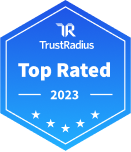Authentication Systems

Top Rated Products
(1-5 of 5)
All Products
(26-50 of 241)
Explore recently added products
Videos for Authentication Systems
Learn More About Authentication Systems
What are Authentication Systems?
Authentication systems are security measures put in place to secure data and systems by requiring additional input beyond username and password for users to access a system. By providing this additional input, authentication systems help ensure that users are who they say they are. Authentication systems can require one other form of user input or more. These systems are sometimes called multiple-factor authentication, or MFA.
Using authentication improves data security and prevents potential breaches. When multi-factor authentication is required to access a system, the system is less vulnerable to security issues like weak passwords or attacks like phishing. Authentication systems are ideal for businesses with sensitive data or systems that require secure user accounts.
Authentication System Features & Capabilities
Authentication Systems have different ways of authenticating users, but they all share a few key features.
- Enable multiple-factor authentication
- Secure systems against password theft or data loss
- Offline authentication
- Secure single sign-on
- User management
Multi-Factor Authentication Solution Methods
Most modern authentication systems offer a wider range of authentication methods than passwords alone. The most common approach for advanced authentication, such as two-factor authentication or multi-factor authentication, is to pair a password with some sort of external verification. Other common authentication methods include:
- Challenge questions
- Unique identifying items, such as physical devices or external applications
- Biometric identifies, such as retina and fingerprint scans or facial recognition
- Location-based authentication
Authentication System Comparison
When comparing different authentication systems, consider these factors:
- Authentication methods: What authentication methods do each system offer? Some authentication products focus on password creation and management, while others provide external applications for MFA. Others offer physical devices, such as keycards or retinal scanners. Buyers should consider which authentication methods are most appropriate for their business.
- Active vs. passive authentication: Some vendors have been more proactive in adopting responsive authentication capabilities, such as behavioral analysis or location-based authentication. These capabilities provide additional visibility into possible security breaches and suspicious authentication attempts, allowing for more rapid and effective responses. However, smaller or more geographically-distributed organizations may not be able to make as effective use of these extended capabilities.
- End-user experience: Each authentication method bears a unique user experience and is more or less accessible than others. For instance, biometric authentication like fingerprints may not be viable or appropriate in certain environments. Other methods require end users to have personal devices, which may not be true for all users. Buyers should consider what the end user base will look like, and what implications that has on which methods to use.
Pricing Information
Pricing for authentication systems depends on the kind of authentication needed. App-based and SMS authentication services tend to be cheaper than biometric authentication or authentication that requires a physical passkey. Many authentication systems offer a free option for a small number of users. Beyond that, authentication systems can start as low as $1.00 per user per month. More fully-featured authentication systems can reach $10.00 per user per month or more.










































